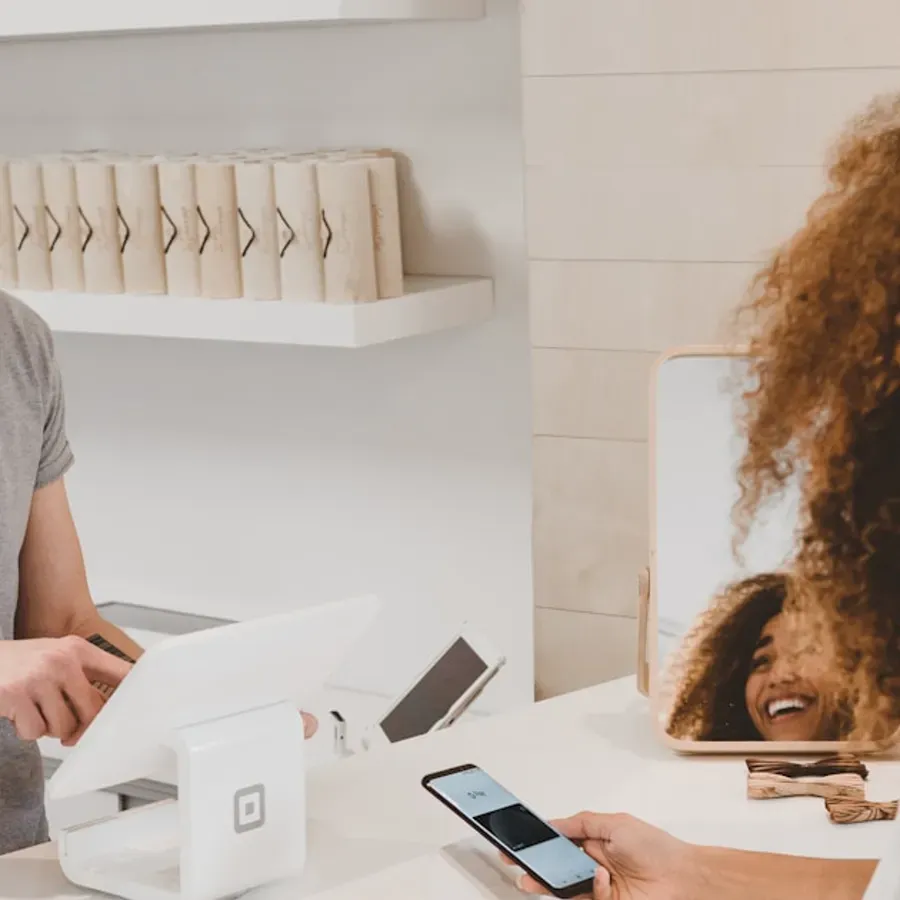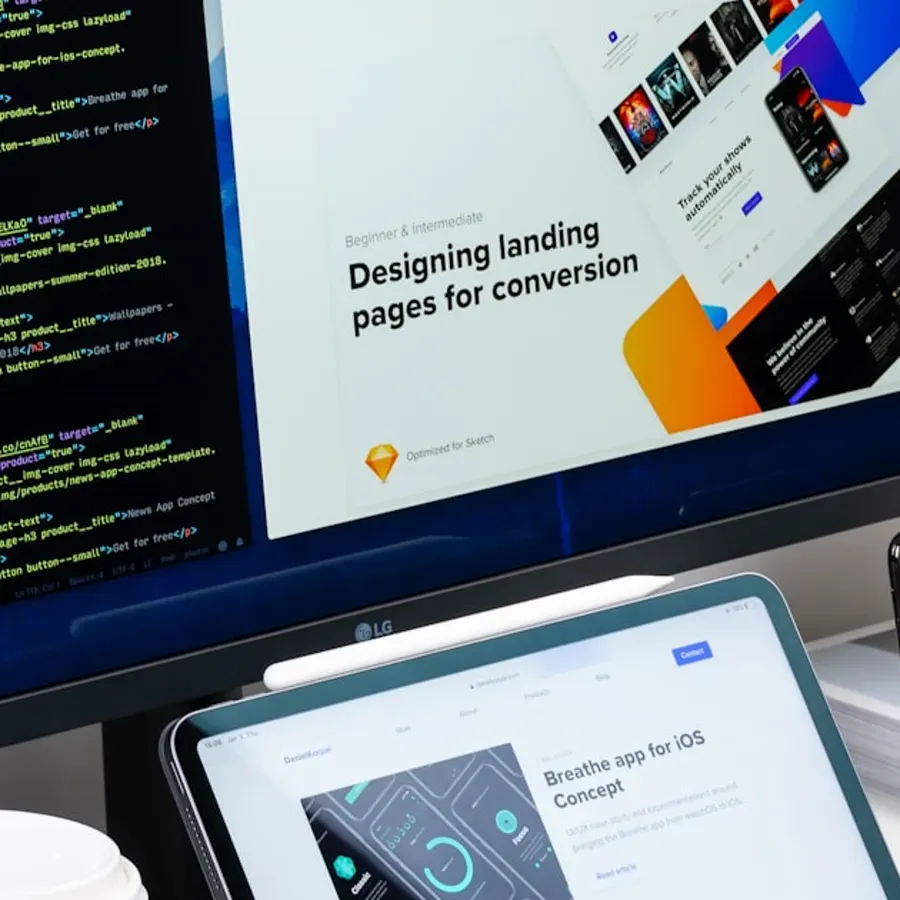
E-commerce Website Design 2025: Complete Guide To Optimizing Online Store User Experience
E-commerce website design directly impacts conversion rates, average order values, customer satisfaction, and business profitability. Unlike informational websites where success means engagement and time on site, e-commerce sites exist solely to drive sales—every design element should facilitate purchase decisions, remove friction from buying process, and build trust encouraging customers to complete transactions. Well-designed online stores balance aesthetics with functionality, creating visually appealing experiences that guide users smoothly from product discovery through checkout without confusion, frustration, or abandonment.
The e-commerce design landscape evolved significantly in recent years driven by rising mobile commerce (over 70% of e-commerce traffic now mobile), increasing consumer expectations shaped by Amazon and major marketplaces, emphasis on fast loading speeds and performance, personalization and recommendation engines, and seamless omnichannel experiences connecting online and offline shopping. Modern e-commerce design requires: mobile-first approach, lightning-fast performance, intuitive navigation and search, high-quality product presentation, streamlined checkout processes, trust signals and social proof, and sophisticated backend integration with inventory management, payment processing, and fulfillment systems.
Homepage Design: First Impressions And Navigation
E-commerce homepage serves multiple critical functions: communicating brand identity and value proposition, showcasing featured products and promotions, enabling product discovery through navigation and search, building credibility through design quality and trust signals, and guiding users toward conversion through strategic CTAs. Homepage design must balance these goals without overwhelming visitors—clean, focused design outperforms cluttered pages stuffed with everything. Key homepage elements include: impactful hero section, clear navigation structure, featured product displays, category highlights, promotional banners, value propositions, trust signals, and prominent search functionality.
The hero section occupies prime above-the-fold real estate communicating core value proposition and enticing users to explore. Effective hero designs include: large, high-quality lifestyle images or videos showing products in context, clear headline communicating unique value or current promotion, compelling subheadline providing additional context, prominent CTA button ('Shop Now', 'View Collection', 'Get Started'), and rotating carousel showcasing multiple products or offers (use sparingly—carousels often ignored). Hero section should load fast despite visual richness—optimize images aggressively, lazy load below-fold content, and ensure mobile hero communicates value in limited vertical space.
Navigation Structure And Category Organization
Navigation design fundamentally impacts product discoverability and user experience. Primary navigation typically includes: product categories and subcategories in logical hierarchy, quick links to sale/clearance items, account/wishlist access, shopping cart icon with item count, and prominent search bar. Mega menus work well for stores with extensive product catalogs—hovering category reveals expanded menu showing subcategories, featured products, promotional images, and quick links. Mega menus reduce clicks required to reach desired products while providing visual context helping users understand category scope.
Navigation best practices include: limit top-level categories to 7-9 for cognitive manageability, use clear, descriptive category names avoiding clever but confusing labels, organize categories by how customers think (not internal organizational structure), provide visual cues (icons, images) aiding quick scanning, ensure mobile navigation works smoothly (hamburger menu or alternative mobile-optimized patterns), and include breadcrumbs showing current location within site hierarchy. Test navigation with real users identifying confusion points and optimizing based on actual behavior rather than assumptions about how users should navigate.
Product Page Optimization: Images, Descriptions, And Reviews
Product pages are where purchase decisions happen—design must answer all customer questions, showcase products compellingly, build trust through social proof, and make adding to cart easy and obvious. Essential product page elements include: high-quality product images, detailed product descriptions, clear pricing and availability, prominent add-to-cart button, customer reviews and ratings, product specifications, shipping information, and related product recommendations. Each element contributes to conversion—missing or poorly implemented components create doubt causing abandonment.
Product images dramatically influence purchase confidence particularly for products customers can't physically examine before buying. Image best practices include: multiple high-resolution images showing different angles and details, zoom functionality enabling close examination, lifestyle images showing products in use/context, 360-degree product views or videos (increasingly expected), consistent image style across catalog maintaining professional appearance, optimized file sizes for fast loading (WebP format, appropriate dimensions), and alt text for accessibility and SEO. Fashion/apparel sites should show products on models (multiple body types increasingly important for inclusivity) and provide size guides reducing return rates from sizing issues.
Product Descriptions And Specifications
Product descriptions must inform and persuade balancing factual information with compelling copy highlighting benefits. Effective descriptions include: clear headline stating product name/model, bulleted key features and benefits for scanability, detailed paragraph providing context and use cases, technical specifications table for data-driven shoppers, material/ingredient information, care instructions, and SEO-optimized content targeting relevant product keywords naturally. Write descriptions from customer perspective focusing on how product solves problems or improves life rather than generic feature lists. For technical products, balance accessibility for general consumers with depth satisfying expert users through expandable sections or tabs.
Product page trust elements include: Customer reviews and ratings providing social proof (products with reviews convert 18% higher than those without), verified purchase badges increasing review credibility, response to reviews showing customer care, photo/video reviews from customers (highly trusted), rating distribution showing honest feedback patterns, and review sorting/filtering by rating, recency, or helpfulness. Display average rating prominently near product name with total review count, implement star rating schema markup for rich search results, and encourage reviews through post-purchase emails offering incentive (discount on next order) without requiring positive sentiment maintaining authenticity.
Shopping Cart And Checkout Optimization
Shopping cart experience critically impacts conversion with average cart abandonment rates around 70%. Cart design goals include: clearly displaying cart contents, enabling easy quantity adjustments or item removal, showing updated totals immediately, displaying progress toward free shipping thresholds, suggesting related products or upsells, and providing clear path to checkout. Persistent cart icon in header showing item count and total provides constant visibility encouraging progression to checkout. Mini-cart preview on hover allows quick cart review without page navigation—consider displaying estimated delivery date building urgency and confirming convenience.
Cart page best practices include: large product images and descriptions confirming selections, inline editing (quantity changes, size/color updates) without page reloads, prominent save for later or wishlist options, clear pricing breakdown (subtotal, shipping estimates, taxes, discounts), promo code field (but don't overemphasize—some users abandon searching for codes), trust badges (secure checkout, money-back guarantee, free returns), recommended products complementing cart items, and obvious, large checkout button standing out visually. Reduce cart abandonment by: showing estimated shipping costs early, offering guest checkout reducing friction, saving carts for returning users, and sending cart abandonment emails reminding users and offering incentives to complete purchase.
Streamlined Checkout Process
Checkout optimization removes friction maximizing completion rates. Checkout best practices include: single-page checkout or clear multi-step progress indicator, guest checkout option (forcing account creation increases abandonment 23%), minimal form fields requesting only necessary information, address autocomplete reducing typing, clear error messages with inline validation, multiple payment options meeting user preferences, trust signals (SSL indicators, security badges, refund policies), order summary visible throughout process, and save payment information for returning customers (with clear security messaging). Each additional checkout step increases abandonment—streamline ruthlessly removing unnecessary questions or confirmation pages.
Mobile checkout requires special attention with 85% of mobile cart abandoners citing complicated checkout as reason. Mobile checkout optimization includes: large, touch-friendly form fields and buttons, auto-focus on form fields, mobile-optimized keyboard types (numeric for phone/credit card, email keyboard for email fields), autofill support saving information, minimal typing required, clear progress indication, and sticky order summary or easily accessible total. Consider digital wallet options (Apple Pay, Google Pay) enabling one-tap checkout dramatically reducing mobile friction. Test checkout on actual mobile devices identifying usability issues desktop testing misses—thumb reach zones, fat finger problems, and orientation changes affecting experience.
Payment Gateway Integration And Security
Payment processing must balance security, convenience, and broad payment method support. Modern e-commerce sites accept: credit/debit cards (Visa, Mastercard, American Express, Discover), digital wallets (PayPal, Apple Pay, Google Pay), buy now, pay later services (Afterpay, Klarna, Affirm), bank transfers or ACH payments, and cryptocurrency (increasingly relevant for specific markets). Offering multiple payment methods reduces abandonment—customers with preferred method unavailable often abandon rather than use alternatives. However, too many payment options create decision paralysis—offer 3-5 most relevant for your market and customer base.
Payment gateway selection impacts security, user experience, transaction fees, and international capabilities. Popular payment gateways include: Stripe offering excellent developer experience, extensive payment method support, competitive pricing, and robust fraud protection; PayPal providing widespread recognition and trust, integrated buy now pay later; Square especially suitable for omnichannel businesses integrating online and physical POS; Authorize.Net established option with broad bank support; and regional specialists optimized for specific markets. Consider: transaction fees (percentage plus fixed fee per transaction), international capabilities, settlement timing, fraud protection tools, development complexity, and customer support quality.
Security And Trust Building
E-commerce security protects customer data and builds trust essential for conversion. Security measures include: SSL/TLS encryption (HTTPS required showing padlock in browser), PCI DSS compliance for payment processing (often handled by payment gateway), secure customer authentication, regular security audits and penetration testing, data encryption at rest and in transit, and incident response plans. Display trust signals prominently: SSL badges, payment security logos, money-back guarantee, secure checkout messaging, privacy policy links, and physical address/contact information. These signals especially important for new or lesser-known brands lacking reputation-based trust.
Additional trust-building elements include: professional, polished design quality (poor design suggests unprofessionalism), customer testimonials and success stories, media mentions or awards, detailed about us page with team photos, live chat support indicating real people available to help, comprehensive FAQ addressing common concerns, clear return and refund policies, and social proof (customer counts, social media followers). Trust particularly critical for high-value purchases where fraud risk concerns are highest—invest in design quality, clear policies, and responsive customer service building confidence in your store legitimacy and reliability.
Mobile Commerce Best Practices
Mobile commerce (m-commerce) now accounts for 70%+ of e-commerce traffic requiring mobile-first design approach. Mobile shopping behavior differs from desktop: sessions are shorter, users browse more and convert less (but conversion rates improving), users often research mobile then purchase desktop (though changing as mobile experience improves), and thumb-based navigation requires different UX patterns. Mobile e-commerce design must prioritize: fast loading speeds (mobile users on slower connections), simple, thumb-friendly navigation, large product images optimized for small screens, streamlined search and filtering, and one-handed operation wherever possible.
Mobile product pages require: vertical scroll-optimized layout, sticky add-to-cart button remaining accessible while scrolling, tap-to-zoom images, collapsible sections for descriptions/specs conserving vertical space, mobile-optimized image galleries enabling easy swiping between photos, and quick view functionality reducing navigation between listings and detail pages. Mobile category pages benefit from: grid layouts showing 2 products per row balancing visibility with browsable content quantity, infinite scroll or load more buttons (rather than pagination), persistent filter/sort controls, and quick add-to-cart from listings for impulse purchases or repeat orders.
Progressive Web Apps For E-commerce
Progressive Web Apps (PWAs) deliver app-like mobile experiences through web technologies: home screen installation, offline functionality, push notifications, and fast, smooth interactions. E-commerce PWAs like AliExpress and Lancôme achieved 76% increase in conversions and 17% increase in mobile revenue respectively after PWA launches. PWA benefits include: no app store approval process, automatic updates, searchable/indexable by search engines unlike native apps, significantly lower development cost than native iOS and Android apps, and works across all devices with modern browsers.
Consider PWA for e-commerce if: mobile represents significant traffic percentage, want to send push notifications engaging users with promotions or cart reminders, serve markets with slower/unreliable connections benefiting from offline capabilities, want app-like experience without native app development costs, or see high mobile bounce rates suggesting performance/experience issues. PWA implementation requires: HTTPS, service worker for offline functionality and caching, Web App Manifest defining app metadata and appearance, and progressive enhancement ensuring basic functionality for all browsers while enhancing for modern capabilities. Modern frameworks (Next.js, Gatsby) simplify PWA development with built-in support.
Product Search And Discovery Features
Product search critical for large catalogs where navigation alone insufficient for finding specific items. Effective search functionality includes: prominent search bar in header, autocomplete suggestions appearing as users type, search results showing product images, names, prices, typo tolerance and fuzzy matching ('sheos' finds 'shoes'), filtering and sorting search results, search history for returning users, and 'no results' pages suggesting alternatives or popular products rather than dead ends. Advanced search features like visual search (upload image to find similar products) and voice search increasingly expected particularly on mobile.
Search optimization strategies include: analyze search queries identifying popular terms and failed searches requiring content additions, implement synonyms and spelling variations, weight search results by relevance, popularity, and profitability, use search data informing merchandising decisions, and consider dedicated search platform (Algolia, Elasticsearch) for sites with thousands of products where basic search proves inadequate. Display trending searches and popular categories helping users discover products they didn't specifically seek—discovery often as important as directed search especially for fashion, home decor, and gift shopping.
Filtering, Sorting, And Recommendation Engines
Filtering and faceted search enable users narrowing large result sets by attributes: category, price range, brand, color, size, rating, availability, and product-specific attributes (screen size for electronics, material for clothing). Well-designed filters include: show filter options relevant to current results (don't show size 'XL' if no XL products in results), display available item count for each filter option, allow multiple selections within facets, enable filter clearing easily, and maintain filter state through pagination. Mobile filtering requires special consideration—often implemented as modal overlays or slide-out panels with apply button committing selections conserving screen space while providing full filtering capabilities.
Sorting options enable different shopping priorities: relevance (default), price (low to high, high to low), newest arrivals, best selling, highest rated, and product-specific sorts. Recommendation engines increase average order value and discovery: 'Frequently bought together' on product pages suggesting complementary items, 'You may also like' showing similar products, 'Recently viewed' helping users return to previously considered items, personalized recommendations based on browsing history, and email recommendations post-purchase or for abandoned browsers. Implement basic recommendations with related product tagging; sophisticated machine learning recommendations require more significant investment but deliver better results at scale analyzing user behavior patterns identifying non-obvious relationships.
Wishlist, Comparison, And Engagement Features
Wishlist functionality enables users saving products for later consideration, building birthday/holiday lists, or sharing desired items with others. Wishlists benefit both users (organizing research, preventing lost finds) and merchants (capturing email addresses, understanding desired products, sending targeted promotions). Wishlist implementation includes: easy add from product listings and detail pages, wishlist icon in header showing saved item count, shareable wishlists (unique URLs for sharing with friends/family), price drop alerts and back-in-stock notifications, and move-to-cart functionality. Require account creation or email for wishlist persistence across sessions—this captures leads for remarketing while providing clear value exchange.
Product comparison especially valuable for technical products (electronics, appliances) or when choosing between similar items. Comparison features include: select products to compare from category pages, side-by-side comparison table highlighting differences, specifications aligned for easy scanning, 'winner' indicators for objective metrics (faster, cheaper, higher rated), and ability to share comparisons. Limit comparisons to 2-4 products preventing overwhelming information density. Not every e-commerce site needs comparison—most valuable for considered purchases where specifications drive decisions rather than impulse or emotional purchases driven by aesthetics or brand.
Live Chat And Customer Support Integration
Live chat provides real-time assistance increasing conversion by answering questions preventing abandonment. Chat benefits include: instant gratification vs email round-trip delays, higher satisfaction than phone (can multitask while chatting), cost efficiency for businesses (representatives handle multiple chats simultaneously), and data collection identifying common questions informing FAQ/content improvements. Live chat implementation considerations: availability hours (24/7 ideal but expensive), staffing levels ensuring quick responses, proactive chat triggers (offering help after time on page or cart inactivity), integration with CRM showing customer history, and mobile optimization ensuring usability on smartphones.
Chatbot automation handles common queries without human involvement: order tracking, shipping questions, return policy inquiries, product information lookups, and routing complex issues to human agents. Modern chatbots leverage natural language processing understanding intent from conversational queries rather than rigid keyword matching. However, provide clear escalation path to humans—customers frustrated by unhelpful bots abandon. Additional support channels include: comprehensive FAQ section, help center with searchable articles, contact forms for non-urgent inquiries, phone support for premium customers or high-value transactions, and social media support meeting customers on preferred platforms. Omnichannel support approach ensures assistance available through method suiting each customer preference and context.
Partner With M&M Communications For E-commerce Excellence
Building successful e-commerce websites requires expertise spanning user experience design, conversion optimization, payment integration, mobile commerce, search functionality, and performance optimization. M&M Communications delivers comprehensive e-commerce design and development services combining beautiful design with robust functionality proven to drive conversions and revenue. Our team includes UX designers, e-commerce developers, and digital strategists collaborating to create online stores that delight customers and achieve business objectives through thoughtful design and strategic implementation.
Our e-commerce services include: custom e-commerce website design and development, platform selection and implementation (Shopify, WooCommerce, Magento, custom solutions), mobile-first responsive design, shopping cart and checkout optimization, payment gateway integration, product catalog design and management, search and filtering implementation, recommendation engine integration, performance optimization ensuring fast loading, security implementation and PCI compliance, analytics setup and conversion tracking, ongoing optimization based on data, and maintenance and support. We don't just build attractive stores—we create conversion-optimized e-commerce experiences driving sales through proven UX patterns, persuasive design, and technical excellence.
Ready to launch or optimize your online store? Contact M&M Communications today for expert e-commerce consultation tailored to your products, market, and business goals. Call 0909 123 456 or email hello@mmcom.vn to discuss your e-commerce project. Let us design and build online shopping experience that converts browsers into buyers, maximizes average order values, and delivers excellent user experience keeping customers returning through thoughtful design combining aesthetics with conversion-focused functionality.






